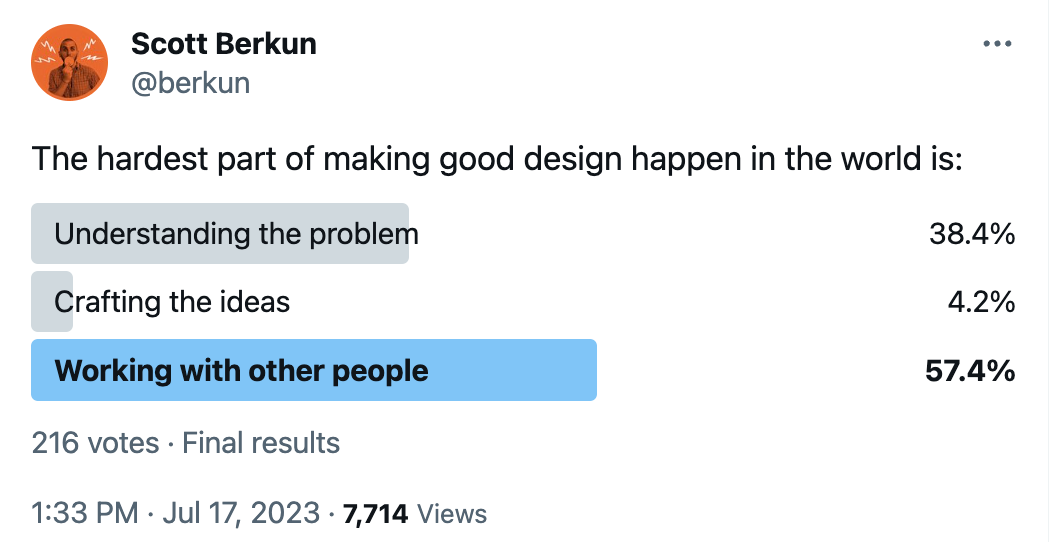In this book we’re exploring why design is so difficult. And how to teach designers better ways to navigate the real challenges of this profession.
To get some context I recently ran a twitter poll. Here are the results:
This is usually the opposite of how design books and courses teach design. Crafting ideas is often what new designers care about the most and want to get to as quickly as possible: design patterns, prototyping tools and idea-generation methods. Understanding the problem, which is the focus of most user research methods, gets significant attention too.
But as this poll suggests, the biggest challenge is working with engineers, managers, executives and clients. They have all of the power and little of our expertise. Yet this challenge gets the least amount of attention, and when it does get covered, it’s from a decidedly design-centered perspective. We set designers up to fail in the real world, armed with methods for the wrong kinds of challenges.
We have found some design books that cover this well, like Leah Buley’s UX Team of One and Communicating the UX Vision by Schell and O’Brien, but they are rare. Most of the design canon assumes a fantasy world where designers are working alone or have great power in their organizations.
Satre famously wrote “hell is other people” but this is often misunderstood. The context comes from a play where people were trapped in a room together. It’s not that other people are hell exactly, but that when trapped we become insecure and scared of how we are perceived, changing our behavior for the worse. We have a self-fulfilling fear. Something design culture perpetuates.
When did you discover that the hard part of design was working with other people? We want to hear your story.




